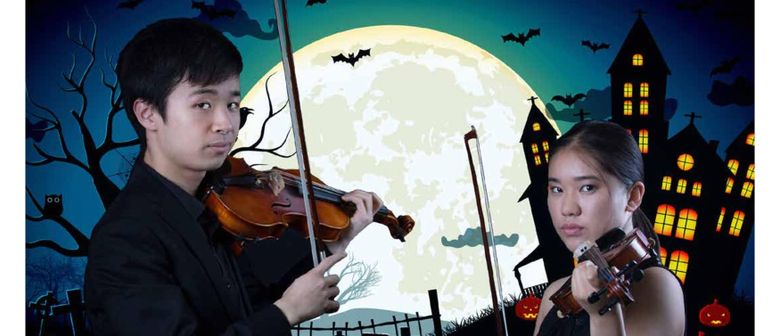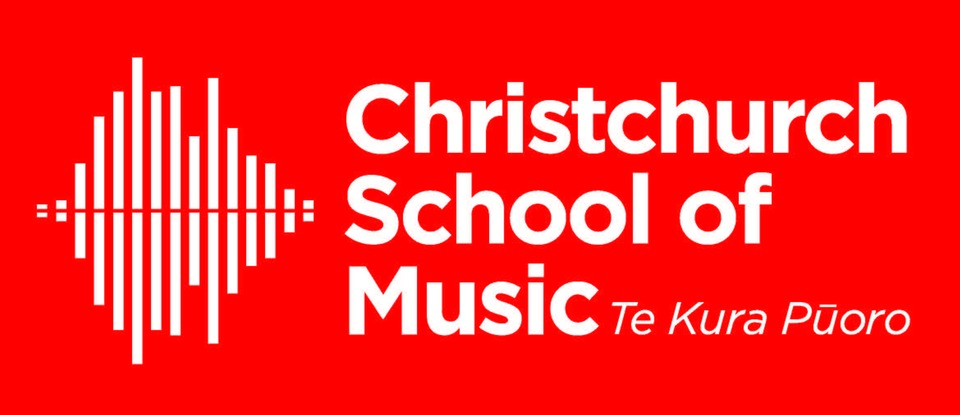The CSM UC Christchurch Youth Orchestra – “Halloween”
CGHS Auditorium – Saturday 27 October 2018
Reviewed by Tony Ryan
I can’t quite put my finger on why familiar classical hits often, as here, come to life in performances by talented young people more than they sometimes do in the hands of seasoned professionals. Could it be a certain sense of discovery that communicates more tangibly to the listener; or maybe that the challenges presented by the technical and musical aspects of the repertoire require a greater degree of commitment and effort than the almost nonchalant, and consequently less engaging, ease that more experienced players sometimes demonstrate? Whatever the case, the Christchurch Youth Orchestra’s Halloween concert proved to be an exceptionally involving experience for the whole audience.
Mussorgsky’s ghoulish “Night on Bald Mountain”, in Rimsky Korsakov’s luridly colourful version, opened this Halloween-themed concert with confident and spectacular effect. Conductor, Helen Renaud, controlled the work’s structure effectively and convincingly with well-judged and finely-disciplined contrasts in tempo and dynamics. And there was no holding back on volume in this relatively intimate venue when the music asked for it, so that the impact was powerful and dramatic. Only in the quietly atmospheric ending did I wish for a little more eloquence and expressively shaped phrasing in some of the wind solos. But the overall effect was certainly a vividly graphic depiction of the ghosts and ghouls that inhabited the evening.
The element of the macabre was also very visually represented, with the stage and surroundings decorated to the hilt with skulls (some with red-lit eyes and the like), skeletons, spider-webs and other grotesquery. Many of the players were also adorned with capes, witches’ hats, masks and makeup, but none of this detracted in the least from the music-making; in fact, it contributed superbly to the nature of the chosen music and made me wish that all orchestras could be less formal and traditional in their presentation.
Lighting also contributed significant atmosphere – blood-red for the Mussorgsky, then eerie white moonlight for the following, even more overtly spine-chilling work, Saint-Saëns’ graphically descriptive “Danse Macabre”, with its scordatura (out-of-tune) devil’s violin, stunningly and energetically played from memory by CYO concert master Rakuto Kurano. The soloist was also “disembodied” by being isolated in his own spotlight away from the orchestra whose members relished the piece’s blood-curdling effects with almost anarchic abandon – great fun!
The orchestra’s six percussionists then took over for a performance of Earle Brown’s innovative, early 1950s work “4 Systems”. My research has managed to uncover only a piano work of this name, but, given the graphic style of the score’s notation (lines and dots rather than conventional notes on staves), it lends itself to almost any musical media, and this percussion-only performance was certainly wonderfully effective. And it was also perfectly in keeping with the concert’s theme, with spooky effects produced by, for example, string bows scraped on cymbals and vibraphone, and unusual beaters on gong and bass drum, to mention just a few of the atmospheric sonorities produced by this impressive team of musicians.
Then the augmented wind and brass sections gave us Eric Whitacre’s surprisingly effective three-movement wind symphony “Ghost Train” where, again, the dynamic and powerful impact of the playing gripped the audience throughout its duration. I say ‘surprising’ because until now I’ve been familiar only with Eric Whitacre’s choral music, which I find rather artificial and derivative. But “Ghost Train” gave me a new respect for this composer; the train sound effects were nothing short of amazing, and the atmospheric expression, as played here, was extremely compelling.
“Oblivion” by Astor Piazzolla featured another violin soloist, this time CYO Assistant Concert Master Hijiri Yamamoto. This is one of the Argentinian composer’s best-known tangos and the playing of both the soloist and the CYO strings was notably stylish and idiomatic. Hijiri Yamamoto’s way of ‘bending’ onto notes was always natural and effective with nothing sounding artificial or ‘painted on’, so that the performance was genuinely moving. The committed playing of the orchestral strings also added considerably to the success of the performance to the extent that, for me, this was the highlight of the programme.
Finally, both the first and second suites from Grieg’s “Peer Gynt” incidental music were put in context by helpful and expressive narration from David Chambers, who held the entire evening together with introductory commentary on each work.
Grieg’s more finely-spun and exposed orchestration proved the greatest challenge of the evening for these young players, but conductor Helen Renaud wisely prioritised the music’s effectiveness over absolute polish and precision. The drama and expression of Grieg’s music were never compromised and the same was true of the whole concert, so that this rather long programme was involving and spell-binding (forgive the pun) from start to finish – a very entertaining and effective night of music-making.
Tony Ryan is a regular reviewer for The Press, RNZ Concert and Theatreview


